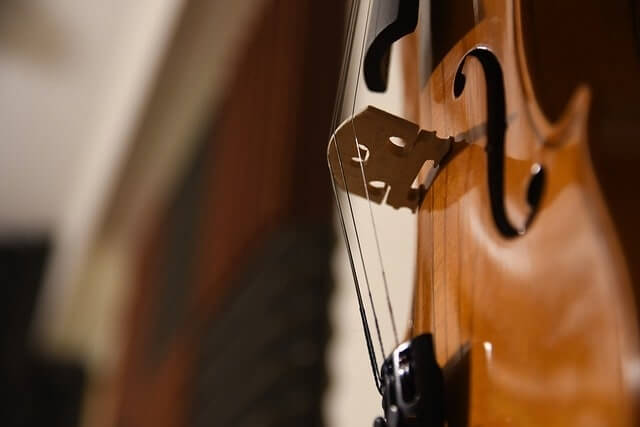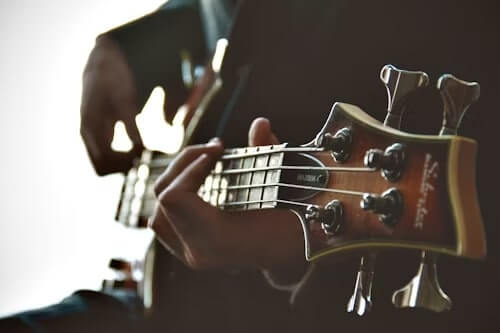Exploring the World of Music Strings: A Comprehensive Guide for Musicians and Enthusiasts
Posted by juststrings.com on Sep 17th 2024
The world of music is not only attractive to the ears but also to the mind. There is much to know about music besides chords, notes, and melody for those who want to get deeper into it.
Today, we will explore the world of music strings and discover what's behind the sound they produce. There is much to learn about the history and manufacture of musical instrument strings.
There are almost as many different types of music strings as there are instruments! Forget going behind - let's go beyond the music to a new world of information about strings.
Musical Instrument Strings
Strings are the moving parts of musical instruments that actually produce sound. Found on any string instrument, they are typically made of steel wire or nylon and are held under controlled tension. The strings vibrate when plucked, picked, or bowed, creating the beautiful sounds we all love to hear.
Strings are held at a specific tension to vibrate at a desired pitch. If you loosen a string, you lower the pitch of the sound it creates, while on the other hand, if you tighten a string, it will produce a higher-pitched sound. This loosening and tightening process is how musicians tune their instruments to create beautiful and melodious music.
As recently as a century ago, almost all music strings were made from the natural fibers of animal intestines. This natural material was commonly called catgut but is now usually referred to as gut. Later, other materials, such as steel and nylon, became more popular for reasons you might guess! However, some classical musicians still prefer strings made of gut because of their unique sound.
Did you know that the vibration of a string makes only a little bit of sound, and thus, instruments have sounding boards to amplify the music?
Types of Music Strings
Music strings are generally of two types: Plain or Wound. Plain strings might be steel, nylon, or even gut, while wound strings are usually metal wire wound on a steel, nylon, or gut core. The construction and material of a string depends on the instrument it's for. The type of string dramatically affects the sound an instrument makes. Music strings usually have a loop, ball, or tie end that helps affix the string to the instrument below the instrument's bridge.
- Plain: The plain strings are just one single length of material made of steel, nylon, or gut. You can think of these as a length of string or fishing line. Initially, they were made of animal intestines, but later, more modern materials like steel and nylon were introduced.
- Wound: The wound strings are not a single piece of wire; rather, they have a central core wire wrapped with another material. The type of winding determines the sound the instrument makes.

Plain Strings
Plain strings are usually used for the highest notes on a stringed instrument. On a violin, the high E string is usually plain, while on a guitar the high E, B, & often G strings are usually plain. Plain strings are usually made from steel wire, but nylon is usually used for classical guitars, and plain gut is very occasionally used for violin and viola strings.
Wound Strings
Wound strings have a central core that is generally cylindrical; another metal or nylon wire wraps around it. This type of string construction is considered a crucial evolutionary step in string technology. Larger gauge wound strings allow a lower pitch sound than a plain gut string can make.
Winding Types
There are several different types of wound strings. How the outer string wraps around the core wire defines the string type. Based on this, there are three types of wounded strings.
- Roundwound
These wound strings are the simplest, most basic type. In this type of string, a round wire wraps around a central core wire in a tightly compressed spiral pattern. These strings are easy to manufacture using modern methods and are generally the least expensive, easiest-to-find wound string type.
Round-wound strings have a semi-bumpy surface that creates friction on the player's fingertips when fingering the string, possibly contributing to a squeaky sound that many musicians try to avoid. Skilled players learn to minimize this unwanted sound.
However, many musicians prefer this squeaky sound as a creative addition to their music. Thus, many punk and heavy metal guitarists scrape the pick on the round-wound strings to add extra effect to their music.
Some vintage-style strings feature an outer wrap wire wrapped around a round core. This construction makes for a more flexible, easily bent string and helps produce a classic rock n' roll or jazz sound.
- Flatwound
These strings have a rectangular cross-section wire wrapped around the central core. Due to the flat surface of the wrap wire, these strings have a much flatter, smoother profile. This makes playing flatwound strings much more comfortable for some players.
Moreover, due to their relatively flat surface, flat-wound strings do not create finger-squeak as much as round-wound strings. This makes them a preferable choice for musicians who want to avoid this sound in their music.
Also, flat-wound strings have fewer grooves for oil and dirt to accumulate, keeping them relatively hygienic and increasing their lifespan. However, flat-wound strings sound less bright than round-wound strings. This less bright tone is a definitive plus for many players, especially those looking for warm, vintage tones.
Flat-wound strings tend to be more expensive than round-wounds. Their advantages (less finger noise, much longer life, and warmer vintage-type tone) outweigh the extra cost for many players. Flatwounds might be the perfect string for you.

- Half-round
Half-round wound strings or half-wound strings are a cross between a round wound and a flat wound. They are made by wrapping a round wire around the central core and grounding it to make it even. Thus, they are also known as ground wound strings. String-makers can get the same result by compressing the exterior of the string, which gives them another name: pressure wound strings.
This grinding and polishing give the string a flat finish, which is more comfortable to play while producing a tone between flat wound and round wound in brightness. It also results in less squeaking than round wounds while at the same time giving a brighter sound than flat wounds.
Much of the wrap wire's mass is removed during grinding and polishing. To compensate for this, most manufacturers use a thicker gauge wire prior to grinding so that the finished string produces the proper feel and sound.
Half-round/half-round/ground-wound strings require extra processing, which increases their cost. Hence, half-wound strings are more expensive than the round-wound strings but generally cheaper than the flat-wound ones. These might well be the perfect balance between roundwound and flatwounds.
Winding Materials
Each type of string is wound differently. Different kinds of metal wrap wire material produce different properties of sound and types of feel in a string, making some materials more suitable than others for particular instruments or musical styles.
The metals used also vary according to the type of instrument the string is meant for. For example, violin and viola commonly use aluminum, silver, and chrome steel while acoustic guitars use 80/20 or phosphor bronze wound strings, and electric guitars and basses usually use nickel wound or stainless-steel wound strings.
Let's examine some of the common materials used for winding strings:
- Plain Steel
- 80/20 Bronze
- Phosphor Bronze
- Stainless Steel
- Nickel Plated Steel
- Pure Nickel
- Gold
- Silver
- Tungsten
- Aluminum
Did you know that before World War I, the strings used in most stringed instruments were made of animal intestines?
Core Types
The behavior of a string is dependent on the shape of its core wire. With this in mind, there are popularly two types of cores for wound strings: Round and Hexagonal. The type of core plays a great role in determining the sound of the instrument and the behavior of the strings.
- Round Core
Round core strings have a round cylindrical core much like the wire used for plain steel strings. Over this core is a tight wounding. These round cores are manufactured traditionally in the same way as strings were 60+ years ago. This type of core provides great contact of the core with the winding wire. Players looking for a vintage sound often love round core strings.
- Hexagonal Core
Hexagonal core (or hex-core) strings have a hexagonal core with a tightly wound wrap wire around it. This hexagonal shape prevents the wrap wire from slipping on the core, which can be a common issue in the round core strings. This type of core provides more tuning stability and reduces string breakage. Hex-core has been the industry standard since the 1970s. Hex-core has advantages but does not sound exactly the same as vintage style round-core strings.

Core Materials
Just like winding materials, the core material used for each string depends on the type of instrument it is meant for. Core wire helps determine the sound and quality of a string. The most common wire used for string cores is steel. With that said, let's have a look at some of the common core materials.
- Steel
- Nylon
- Carbon Fluoropolymer
- Synthetic Polymers
- Gut
String Measurement
Strings are usually described using two parameters: Gauge and Tension. These measurements can help you as a musician to determine the type of string you might want to use. Let's discuss these types in detail.
Gauge
In musical jargon, gauge refers to the diameter of the string. The sound of a string instrument is largely dependent on the mass of each string. As the gauge increases, the mass of the string also increases.
String manufacturers commonly describe string diameter (gauge) using thousandths of an inch (.001"). Some string makers will use millimeters rather than inch measurements. Heavier strings with larger gauges have higher string tension and are harder to press down on the fingerboard. Likewise, lighter strings with smaller gauges are generally easier to press down and to bend.
When a fretted instrument is restrung with a different string gauge than it was originally designed for, it will require an adjustment of the string height above the frets, a neck adjustment and sometimes other adjustments. This "set-up" makes playing easier and also prevents strings from buzzing against frets. This kind of adjustment should be performed by a qualified instrument tech (guitar tech, luthier, etc.). A qualified person can be found at most music stores. Just ask at your favorite music store for an instrument "set-up" and you'll be pointed in the right direction.
Some common instruments with strings typically described by gauge include the following:
- Electric Guitar
- Acoustic Guitar
- Bass Guitar
- Banjo
- Mandolin
- Bajo Sexto

Tension
Strings are not only described by gauge but also by tension. This measure became popular mainly after the advent of steel and synthetic core strings. Classical guitar and orchestral instrument (violin, cello, etc.) strings are frequently represented as one of three tension levels: Hard, Medium, and Light. These tensions are also known as Stark, Mittel, and Weich in German, as many of the highest quality orchestral strings are made in Austria and Germany.
These tension levels are not specific and are not exactly related to string diameter/gauge. Since tension levels are not standardized, one brand's medium tension may be different from another brand's medium tension.
Bottom Line
Did you have any idea reading this that music strings could be so involved? We've discussed only the tiniest fraction of what there is to know about music strings. That said, this is a great start for anyone looking to learn!
We've discussed the types of strings used for various instruments as well as the materials used in their manufacturing. We've also highlighted the terminology used for measuring strings' size, diameter, and weight (mass).
Everything that we have discussed here will help you determine the right string for your instrument. Knowing a little bit about strings will go a long way to helping you decide what you want to try on your journey to finding the best string for you, your instrument, and your musical style. Good luck! Please don't hesitate to ask questions about anything you're unsure of while looking for strings.

